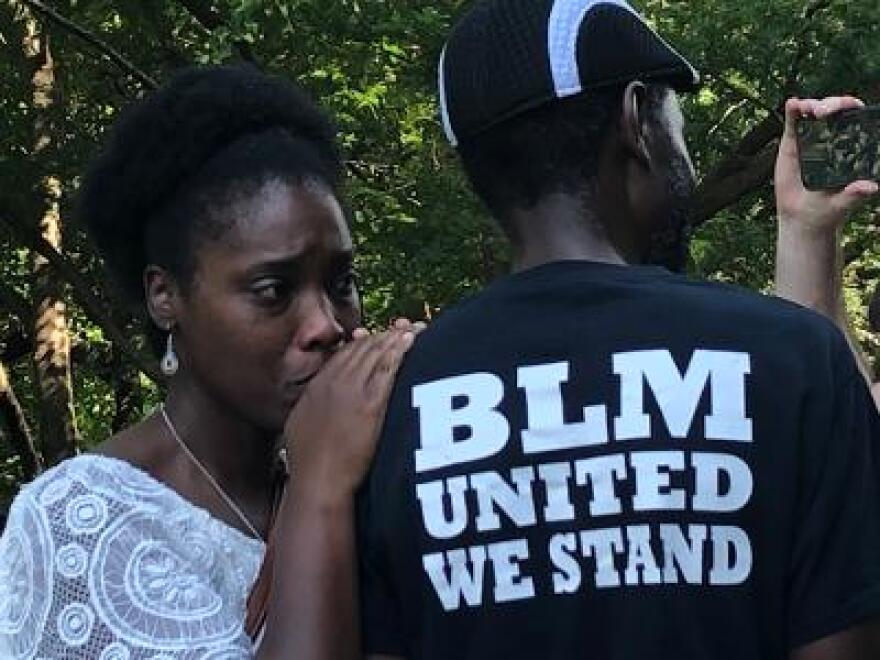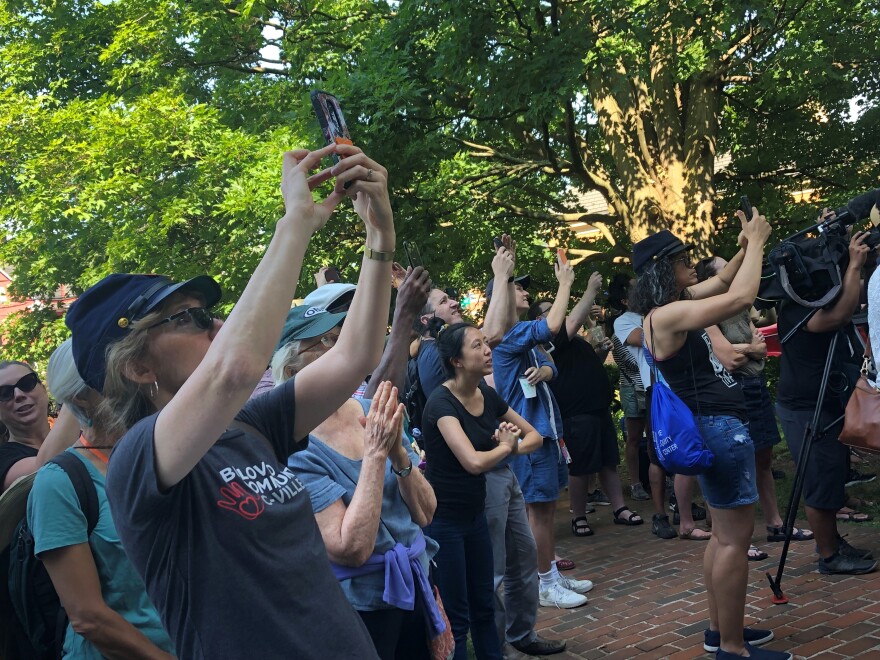It’s been nearly four years since white supremacists brought violence and bloodshed Charlottesville, Virginia – protesting the city’s decision to remove Civil War monuments. Saturday, those statues came down and area residents cheered.
The city kept plans to remove statues of Generals Robert E. Lee and Stonewall Jackson quiet until last night, hoping to minimize the risk of further violence, but those who had fought to keep confederate monuments in place were largely absent today, and about 200 people who showed up for the early morning event were thrilled as a crane lifted each 6,000-pound sculpture from its pedestal.
Tanya Chanda and her husband drove for more than an hour on their anniversary to be here, and as the Jackson statue was removed, she wept.
“My ancestors were slaves, and to see something – it’s really emotional,” she said.

Others celebrated the moment as historic.
"We can’t change the hearts and minds of everyone, but this is a beginning," said Juandiego Wade, a member of Charlottesville's school board and a candidate for city council.
"I used to hang out in this park a lot in high school, and we never really examined what it meant to be in a park that was named after a confederate general and the horrible things he did," said UVA graduate student Charlie Bruce. "I texted all of my friends this morning who used to hang out here. The statue’s coming down. I sent photos and videos, and we’re just so happy."
UVA Professor Jalane Schmidt fought for years to get rid of the statues. She was glad to see them go and heartened to hear more discussion of racism and the need for change.
“There have been more conversations nationwide about how we memorialize figures and history in our public spaces, and what we can do to make public spaces more inclusive,” says Schmidt.
“I think that there’s been progress and improvements on certain issues," adds Zenayah Bryant, a UVA student who circulated a petition calling for statue removal when she was in high school. "I think that we’re finally able to say words like ‘white supremacy’ in public and people won’t shy away and no longer want to have conversation with you.”
But there was also a sense that more needs to be done.
“They don’t have their signs here. They don’t have their tiki torches, but they’re still here,” said Bryant's 15-year-old sister Zeniah.
The Reverend Marvin Morgan concluded, "“We’ve made a lot of progress, but what saddens me with my gray hair – I’m 73-years old – is that my grandchildren and great grandchildren will have to fight those battles all over again.”
The statues were taken by truck to an undisclosed location while the city weighs offers from museums willing to take them.

As soon as they were gone, city council met and approved removal of a third statue – this one depicting the native American woman Sacagawea cowering behind two white explorers – George Clark and Meriwether Lewis. Her descendants have told the city that her portrayal is offensive to them.


